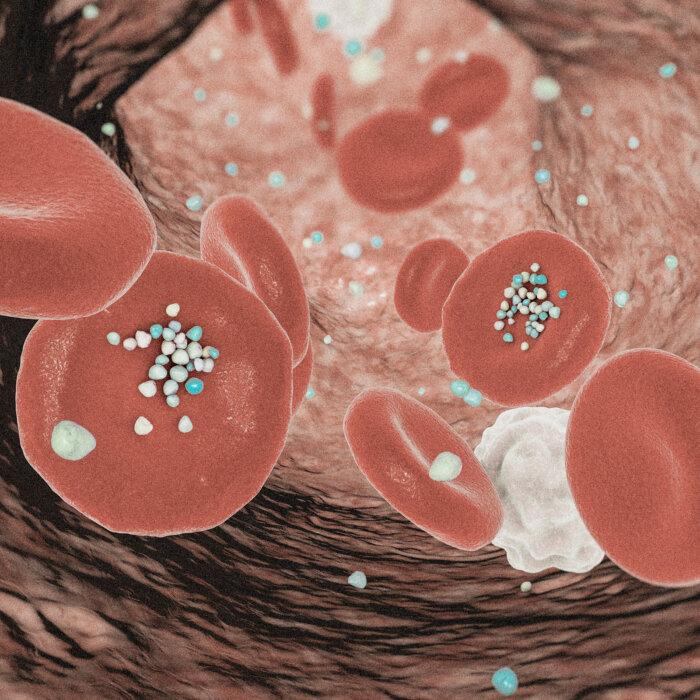In today’s world, plastic products are ubiquitous, permeating nearly every aspect of modern life. However, research highlighting a concerning link between these plastics and human health. Studies indicate that microplastic particles can cause DNA damage and may significantly increase the risk of various cancers
Plastic particles retained in the body may trigger biological effects, including oxidative stress, increased secretion of cytokines, cell damage, inflammation, immune responses, DNA damage, and neurotoxicity—all of which are linked to a higher risk of cancer, Ooi Hean, deputy director of the International Center at China Medical University Hospital, stated in an interview with The Epoch Times.
Ooi added that the potential chemical toxicity of microplastics should not be overlooked.
Cancer Risks Associated with Microplastic Exposure
Leukemia and Lymphoma
Bone marrow is the foundation of the hematopoietic system, responsible for producing essential blood cells, including red blood cells, white blood cells, and platelets.Prostate Tumors
A 2024 study published in eBioMedicine identified microplastics in both tumor tissues and para-tumor tissues (the surrounding non-cancerous tissues) of prostate cancer patients. The study identified microplastics included polyamide (nylon), polyethylene terephthalate (PET), and polyvinyl chloride (PVC) in both types of tissues, while polystyrene (commonly used in foam plastics) was found exclusively in tumor tissues.The researchers also found a positive correlation between polystyrene levels in prostate tumor samples and the frequency of takeout food consumption, suggesting a potential dietary source of this specific microplastic.
Despite the uncertain direct role of microplastics in tumor formation, Yen warned that plastic exposure presents other potential health risks.
“When plastic products are discarded, they eventually become waste, flowing into rivers and reaching the ocean. There, they can interact with various substances, such as heavy metals like zinc and cadmium, as well as endocrine-disrupting chemicals like bisphenol A (BPA) and polychlorinated biphenyls (PCBs). These pollutants may then be ingested by marine organisms, entering the food chain and ultimately making their way back to our tables,” he said.
Colorectal Cancer
Colorectal cancer is the third most common cancer worldwide and the second leading cause of cancer-related deaths, surpassed only by lung cancer. A 2023 study published in Cancers (Basel) examined several potential mechanisms by which microplastics may contribute to an increased risk of colorectal cancer.One mechanism involves the disruption of the intestinal mucus layer, which serves as a protective barrier for intestinal cells. When this layer is weakened or damaged, gut bacteria and toxins can directly interact with intestinal cells, triggering inflammation and increasing the risk of carcinogenesis (the formation of cancer).
Due to their chemical properties, microplastics can also act as carriers for harmful substances, including carcinogens, toxic metals, and pathogenic microorganisms. These substances may be absorbed by intestinal cells, leading to DNA mutations or hormonal imbalances that promote cancer cell proliferation.
Lung Cancer
The lifecycle of plastics, from production to disposal, releases microplastics and nanoplastics into the environment, including the air.Microplastic Exposure Begins in Infancy
Exposure to microplastics begins very early in life. Microplastic pollution is widespread in drinking water, air, food packaging, and household products. Research indicates that infants ingest microplastics from plastic infant feeding bottles at levels 2,600 times higher than the total amount adults consume from water, food, and air.Plastic Particles Common in Bottled Water
In addition to infant feeding bottles, bottled water has also been found to contain a significant amount of plastic particles.The study identified seven types of plastic particles in bottled water, including PET, commonly used in water bottle manufacturing, and nylon, which is used in filtration and water purification. Other detected plastics, such as PVC, polymethyl methacrylate (PMMA), and polystyrene (PS), are also used in water treatment.
- Glass is chemically stable and does not release microplastics.
- Stainless steel is heat-resistant and safe, but should not be used for prolonged storage of acidic beverages to prevent metal leaching.
- Ceramic is suitable for hot food and drinks, but make sure it has a lead-free glaze.
Microplastic Contamination in Tea
Tea bags release plastic particles when steeped.- Polypropylene tea bags released about 1.2 billion nanoparticles
- Cellulose tea bags released about 135 million
- Nylon-6 tea bags released about 8.18 million.
Yen suggests incorporating reusable materials into daily life, such as cloth shopping bags and wooden, glass, ceramic, or bamboo utensils.
“This is also an effective way to reduce the amount of microplastics entering our food chain.”






